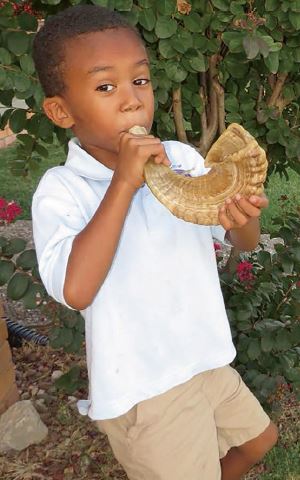Simple Yet Meaningful Rosh Hashanah Resources for Remote or Blended Environments
Simple Yet Meaningful Rosh Hashanah Resources for Remote or Blended Environments
This new year is starting like none other in recent memory. As Rosh Hashanah approaches and we mark a new season with our students, the time is ripe to focus on the meaning and values of our traditions and holidays.
We've rounded up some free, ready-to-go Rosh Hashanah lessons and activities for various ages that make good use of your limited time and their limited attention span. The first one below comes from our curated collection of downloadable resources to manage the new digital work environment, so you can continue building skills and maintaining connections with students from any location. The resource page also includes a Guide for Remote Learning for Judaics with smart tips that can be applied to any of the free resources on this new resource page.
Grades K-2
Big ideas:
- On Rosh Hashanah, we can make a fresh start in the new year by thinking of ways to grow.
- Rosh Hashanah marks the beginning of the Jewish New Year.
Use this Rosh Hashanah student material and teacher lesson, drawn from Let’s Discover the Fall Holidays. to help students explore the sensory aspects of Rosh Hashanah: hearing the shofar, tasting apples dipped in honey, and so on. Then reflect on how the Jewish New Year can bring more kindness and joy into our lives.
Grades 3 and Up
Educator Batsheva Frankel devotes an entire chapter of her essential Jewish Educator’s Companion to experiential education for formal educational settings. Here’s one idea for an experience, based on the idea that Rosh Hashanah is like a year-end review between an employee and the boss. Have students prepare for their reviews, filling out a self-reflection form (create a template) about their strengths and weaknesses, areas in which they’d like to improve, and accomplishments from the past year. Children can dress up nicely—to impress their employer—adding to the drama. Have them meet with one of the boss’s assistants (a great way to incorporate older students or teens) to review the form (whether in person or over videoconference) and together make a concrete plan of action for success in the coming year. Younger students can dictate their self-reflections to the assistants. Send the action plan to parents after the holidays.
Grades 4 and Up
This notion of teaching the underlying Jewish ideas and values of the holidays is the approach behind Make, Create, Celebrate: Jewish Holidays Through Art. This method uses art as a lens to examine the big ideas of each Jewish holiday.

Here’s a lesson about Rosh Hashanah and Yom Kippur and their key theme of reflection:
Have students examine this self-portrait by Marc Chagall and think about what they see and what might be happening in the image. Lead them in a routine called See/Think/Wonder, which was developed through Harvard University’s Project Zero. Ask what they see - a green face or a cow, for example. Then ask what they think is happening. Follow up with wonder questions - I wonder why the face is green, for example.
Elizabeth Diament, the senior educator at the National Gallery of Art and consultant for Make, Create, Celebrate, has written that, “Thinking routines have the capacity to activate student’s deep thinking by privileging their own ideas as a valuable source of information, getting them personally involved, and using questions to drive learning and uncover complexity.” This could be a definition of the goals of Jewish schools as well.
Students can then make their own self-portraits, based on the Chagall model. The Chagall piece is an excellent vehicle to teach about Rosh Hashanah because the holiday’s theme of self-reflection. A self-portrait, such as Chagall’s, is a way to think about these values.
After students create their interpretive art, teachers might talk about how knowing who we are is important to who we can aspire to be next. We can’t become better if we don’t know who we are to begin with, and the self-portraits help us understand a little more about ourselves.
Keep up with the latest information by subscribing to our newsletter and connect with us on social media!




